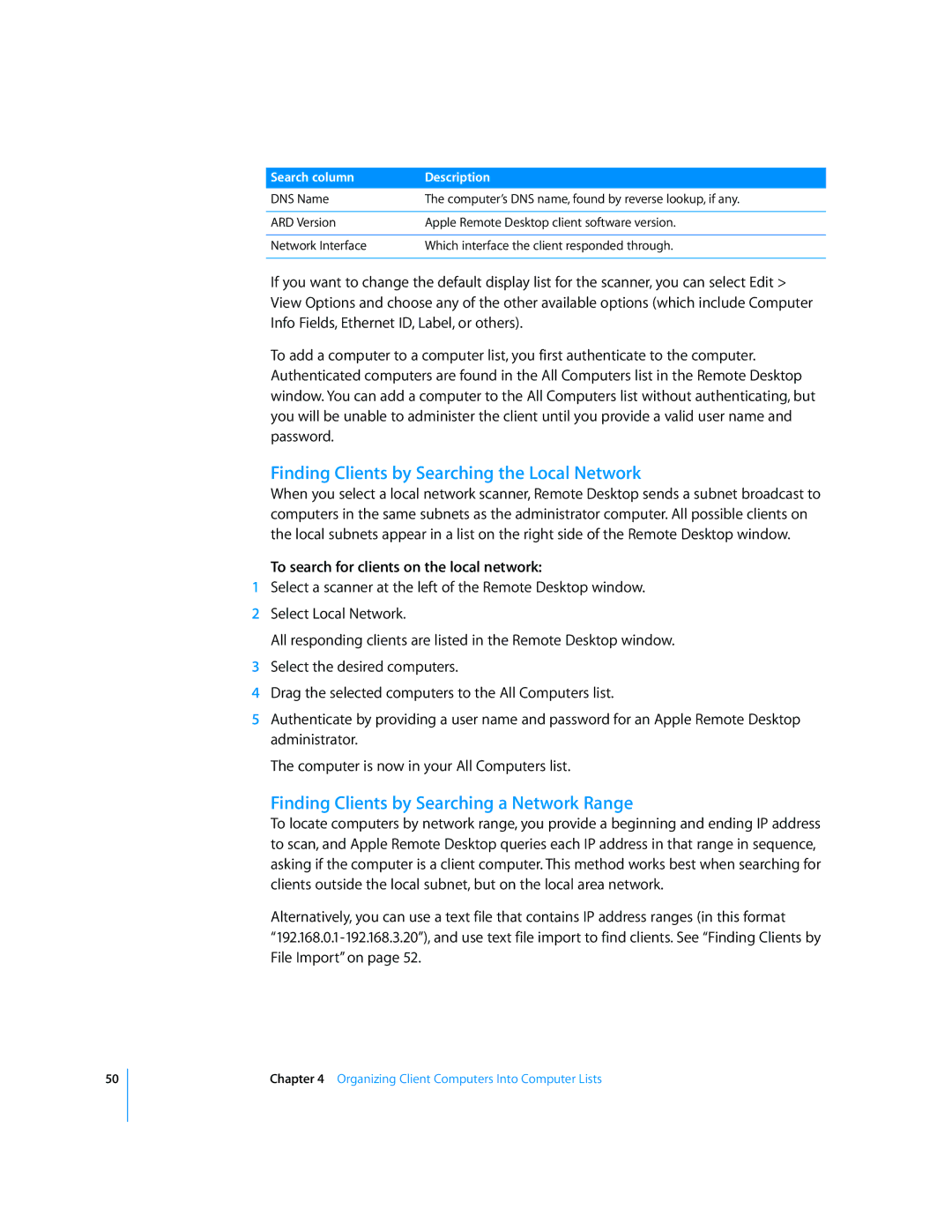50
Search column | Description |
DNS Name | The computer’s DNS name, found by reverse lookup, if any. |
|
|
ARD Version | Apple Remote Desktop client software version. |
|
|
Network Interface | Which interface the client responded through. |
|
|
If you want to change the default display list for the scanner, you can select Edit > View Options and choose any of the other available options (which include Computer Info Fields, Ethernet ID, Label, or others).
To add a computer to a computer list, you first authenticate to the computer. Authenticated computers are found in the All Computers list in the Remote Desktop window. You can add a computer to the All Computers list without authenticating, but you will be unable to administer the client until you provide a valid user name and password.
Finding Clients by Searching the Local Network
When you select a local network scanner, Remote Desktop sends a subnet broadcast to computers in the same subnets as the administrator computer. All possible clients on the local subnets appear in a list on the right side of the Remote Desktop window.
To search for clients on the local network:
1Select a scanner at the left of the Remote Desktop window.
2Select Local Network.
All responding clients are listed in the Remote Desktop window.
3Select the desired computers.
4Drag the selected computers to the All Computers list.
5Authenticate by providing a user name and password for an Apple Remote Desktop administrator.
The computer is now in your All Computers list.
Finding Clients by Searching a Network Range
To locate computers by network range, you provide a beginning and ending IP address to scan, and Apple Remote Desktop queries each IP address in that range in sequence, asking if the computer is a client computer. This method works best when searching for clients outside the local subnet, but on the local area network.
Alternatively, you can use a text file that contains IP address ranges (in this format
Chapter 4 Organizing Client Computers Into Computer Lists
